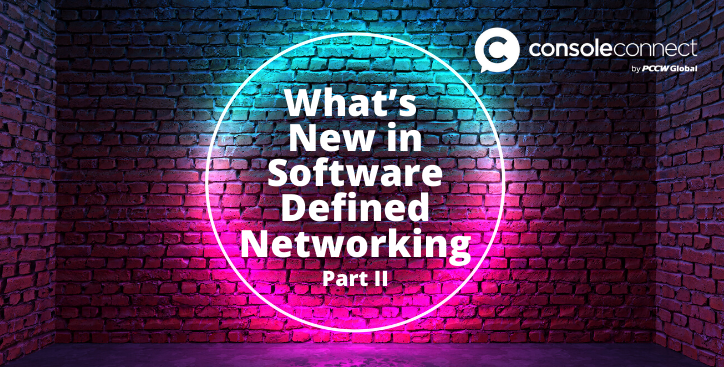What’s New In Software Defined Networking (part II)
By Jay Turner|28 May, 2020

Topics:
Networking
By Jay Turner|28 May, 2020

In our first instalment of the latest trends to watch in software defined networking (SDN), we looked at some of the key factors that are driving SDN adoption globally.
In this second instalment, we look more closely at some of the new SDN options becoming available to enterprises as they look to improve network performance for themselves and their customers.
Interconnections are becoming the enterprise's new best friend, particularly as they try to embrace a multi-cloud strategy. It is commonplace for enterprises to use multiple cloud providers, with 60% of enterprises now using 21 or more public cloud services, according to a report from McAfee.
SDN interconnections are essential for any enterprise looking to easily connect together a number of different clouds, applications and network devices. At the same time, interconnections are helping enterprises avoid some of the pitfalls of vendor lock-ins and instead allowing them to access a best of breed service from different cloud providers.
Furthermore, interconnects also enable network administrators to use software for much of the work they used to do manually, including physically setting up network switches and devices. This means they can focus their efforts on dynamically provisioning and utilising networks to meet the needs of their business, as well as rapidly deploying new technologies.
So far, most of our SDN trends have focused on how network traffic travels from “north to south” – as we’ve considered new ways for enterprises to connect to the data centre, a cloud or a SaaS provider.
Equally as important is how your network traffic travels from “east to west” – or rather how it flows across the data centre itself. Increased traffic within the data centre is another potential single point of failure for an enterprise and where there is an obvious and apparent need for fine-grained access control.
In trend 2, we looked at the importance of Dynamic Service Chaining in helping enterprises more dynamically configure their networks. East-west automation is linked intrinsically to this and plays an important role in simplifying service chaining and reducing the time to deploy important network services, such as DDoS scrubbing, firewalls and packet inspection utilities. East-west automation can result in increased visibility into network traffic and utilisation, and therefore, overall better network control.
It’s not just the networks that are changing, data centres models are too.
2019 saw an increase in the number of smaller data centre facilities, which are increasingly emerging in more niche markets where they help to meet the demands of that local area. At the same time, a lot of companies are pushing more compute to an edge network (more on that shortly) to ensure fast and secure data access.
The net result is that enterprises no longer spend months or even years planning a single large data centre deployment, but instead are making smaller, more technical deployments in a larger number of data centres.
That’s where automation again demonstrates its value to the enterprise as its helping to bring together those multiple sites together quicker and reduce the maintenance burden on engineers.
Our final trend looks at a fundamental shift in where enterprise data is being handled and processed. Driven by the huge growth in connected devices (IoT) and the arrival of 5G, workloads are increasingly migrating to ‘edge' locations where they are nearer to the source of the data being processed.
This is known as edge computing and it’s only going to get bigger: Gartner predicts that by 2025, three quarters of enterprise-generated data will be created and processed at the edge – and therefore outside of a traditional centralised data centre or cloud.
But as more workloads move to the edge, it is becoming harder for the enterprise to manage and monitor the network. This new outward focus is causing many organisations to rethink the placement of certain applications based on network latency, and automation is key to helping them do this.
©2025 PCCW Global. All Rights Reserved.